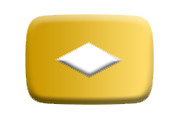The importance of Gerber file in PCB manufacturing
What is a Gerber Data?
Gerber is a documents style that we frequently use in the PCB sector. We make use of a Gerber documents to describe the different elements and constituents of a PCB board. So, this includes points like legend layers, the steel we are going to make use of, conductor layers, wiring pads, and the solder mask layers. The Gerber format was created and mainstreamed by a firm referred to as Gerber as well as therefore from there came the name.
We design MOKO PCB boards by utilizing an unique set of tools. So, these tools mainly include CAD (Computer Assisted Design) and also EDA (Electronic Design Automation). These devices help us in producing basic PCB fabrication information. We then start the manufacturing of PCBs based upon this information. If a client provides a PCB layout documents to a manufacturer without including the Gerber file then the manufacturer will certainly face a great deal of difficulties. This is due to the fact that the Gerber file extensions are empirical to PCB production as it functions as a set of standards and also references. Makers depend on the PCB Gerber visitor for describing and understanding the making specifications of numerous modules of a PCB board. Thus, we can make use of a Gerber declare both PCB fabrication and also assembly.
What is a Gerber Data
What is the importance of a Gerber File?
If you are carrying out PCB construction after that you will certainly have to make use of the Gerber documents throughout the process. The online Gerber data audience works as a standard for photoplotters, tale printers, CAD developers, image analysts (AOI and X-ray), as well as multilayer producers. Hence, Gerber documents are comparable to a directing celebrity which assists the makes throughout the PCB manufacture trip.
We consist of a stencil layer in the Gerber PCB when we are dealing with PCB setting up. This allows us to regulate the locations of numerous digital elements also. Hence, it provides us with essential information that gives us guidelines for SMT as well as through-hole setting up procedures.
What are several of the various variations of Gerber Data?
Gerber data format is always advancing so it has had numerous variations in the past. Nevertheless, today we generally use 3 preferred variations of the Gerber documents.
1) Gerber X2
This is the most recent complimentary Gerber viewer layout. The best aspect of this version is that it sustains stack up data. Furthermore, it likewise has a variety of advanced characteristics.
2) RS-274-X
This variation of the PCB Gerber file has actually the most broadened capability. So, we widely use this variation in routine PCB documents viewer on the internet production procedures.
3) RS-274-D
This version of the on the internet Gerber visitor style is the oldest one and also most traditional PCB makers still utilize it. However, the various other 2 versions are slowly replacing this version.
Gerber Info types and layout
1) pcbname.GTL
We use this data type to save information connecting to the top copper layer.
2) pcbname.GTS
We often utilize this documents type to keep data appropriate to the leading solder mask layer.
3) pcbname.GTO
We typically utilize this kind of file in our routine PCB production operations to store information relevant to the top silkscreen.
4) pcbname.GBL
A lot of PCB makers use this sort of documents in their arrangements to keep information and also information relevant down copper layer.
5) pcbname.GBS
This type of format is most suitable for storing information and information concerning the bottom solder mask layer.
6) pcbname.GBO
This format is perfect for maintaining a record of information relevant down silkscreen.
7) pcbname.TXT
We mostly utilize this data kind or style for keeping a document of the boring info. This generally includes information pertinent to openings and also other attributes that we are going to pierce in our PCB boards.
8) pcbname.GML/ GKO.
This data format is most suitable for saving info pertinent to the summary of the PCB board.
9) pcbname.GL2.
We use this kind of file just in multilayer PCB boards. It gives us info appropriate to the second inner layer.
10) pcbname.GL3.
This type of data is likewise reserved only for multilayer PCB boards. We use it for saving information pertinent to the third internal layer.
Exactly how to create a Gerber data from Eagle?
Autodesk Eagle is a very helpful device for PCB design and also layout. It has scripting functions that permit us to automate the electronic style process. As soon as you complete the design of your PCB board in Autodesk Eagle, the next step is to generate a Gerber documents. This is due to the fact that you will certainly need to send this Gerber data example in addition to your various other design data to your PCB manufacturer. One of the best features of Autodesk Eagle is that it includes a very intuitive WEBCAM cpu. This module enables us to import any kind of WEBCAM data and after that promptly generate any type of kind of file that you might need for your PCB board. So, you can use this capability to generate the called for Gerber file.
1) Open up the WEB CAM processor.
Open up the CAMERA processor.
You will initially need to import as well as open up the PCB design data in Autodesk Eagle. The PCB format file has a (. brd) expansion. So, for opening it you can click the WEBCAM switch. Alternatively, you can do this by first clicking on File and then navigating to the WEB CAM cpu. Doing this will quickly open the CAMERA cpu that we are going to make use of for generating the Gerber files.
2) Navigate to Job.
Navigate to Work.
The next step is browsing to the work. You can do this by clicking Documents and afterwards clicking open. After that toggle the task switch.
2) Open up the gerb274x.cam documents.
You will certainly need to first navigate to the default WEBCAM folder of your Autodesk Eagle. So, from there you can select the gerb274x.cam file. Once you have done that, you can pick open.
3) Add a second silkscreen.
If you check out the tabs in Autodesk Eagle after that you will observe that we do not have any type of declare the bottom silkscreen layer. This is because, in the case of easy PCB boards, we typically position the silkscreen only on the leading layer. Nonetheless, if you have a complicated PCB as well as you intend to include an extra silkscreen under layer, after that you can do that also.
Firstly, you will certainly need to click on Include.
Then you will have to change the area. You can use any kind of appropriate term such as “Silk Display Base”.
After that, you will certainly need to change the fie to “% N.pls”.
Then you will certainly need to deselect all the layers.
Then pick these layers: 26 “bNames, 20 “Measurement, as well as 22 “bPlace”.
4) Create a Gerber Data.
Develop a Gerber Data.
You can currently ultimately create your needed Gerber documents. For this purpose, you will need to click the Process Work button. Then you will certainly see that your needed Gerber documents is produced in the task folder of your Eagle control panel.
5) Sending Out the Gerber Documents to MOKO Modern Technology.
When you have actually created the Gerber files, you will have to send them to MOKO Innovation to make sure that we can start processing your order. For this function, you will need to assemble all of your Gerber data as well as zoom them in a solitary folder. After that you can post this zip data to the order web page of MOKO Technology. This will enable us to receive the Gerber documents along with your order specifications. For this reason, we will certainly begin servicing it immediately.
Usual blunders of Gerber data from eagle and also how to address it.
1) Missing out on drill documents.
We require these files for determining the location and also size of the holes that we are about to pierce in a PCB board. If you fail to remember to include these data after that your PCB maker can face a significant amount of difficulty.
2) Missing out on solder mask layers.
If your PCB board has 2 or even more layers then the documents need to have 2 solder mask layers. One is for the top layer and also the various other is for the bottom layer.
3) Missing or dual outlines.
Among the most usual blunders is that individuals usually create files that lack details. These lays out are very important for determining where to reduce the PCB boards. Often people incorrectly create documents where they include 2 or more boxes around the PCB board. In both of these situations, the PCB supplier can face serious issues.
4) PCB size mismatch.
Usually the measurements of the PCB board entered in the order do not match the dimensions entered in the Gerber documents. You need to stay clear of to make sure that we can protect against any considerable hold-ups in PCB production.
5) Positioning of Drill holes cut into the tracing.
In some cases people erroneously place the drill openings as if they interfere with the circuit mapping. On top of that, they neglect to reroute the mapping around the hole. You need to prevent this so that the capability of the PCB board is not damaged.
6) Layered as well as non-plated holes are not plainly specified in Gerber File.
Often individuals lack a fundamental understanding of how the Gerber PCB software program differentiates the NPTH from the PTH. In Autodesk Eagle, you can make the NPTH by using the hole device. On the other hand, you have to use the Via device for making the PTH.
















